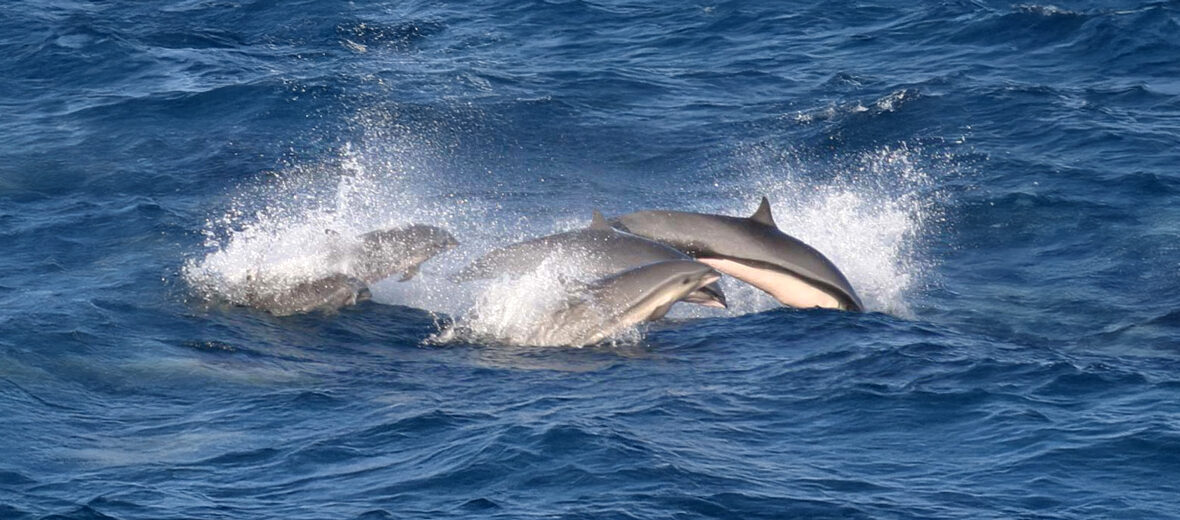
The Fraser’s dolphin, aka Sarawak dolphin, can be found in deep tropical waters; between 30°S and 20°N, mostly in the Pacific Ocean. However, they can also be seen in the Atlantic and Indian Oceans too. These dolphins face the threats of overfishing; bycatch, getting caught in long lines and purse-seine nets; hunting, via harpoon, for their meat and blubber; and recreational activities that can interfere with their breeding and feeding. However, they are abundant enough to be listed as Least Concern by the IUCN. Their population trend is unknown.
First the Stats…
Scientific name: Lagenodelphis hosei
Weight: Up to 440 lbs.
Length: Up to 9 feet
Lifespan: Up to 18 years
Now on to the Facts!
1.) Charles E. Hose found a skull on a beach in Sarawak, Borneo in 1895 and donated it to the British Museum. This skull remained unstudied until 1956! Francis Fraser studied the skull and determined that it was very similar to species in both the genera Lagenorhynchus and Delphinus but not the same as either of them. A new genus was then created by merely merging these 2 names together. The specific name was given in honor of Hose.
2.) Not until 1971 was a whole body of a Fraser’s dolphin, as it was by then becoming known, was found washed ashore on Cocos Island in the eastern Pacific, in South Australia.
3.) Fraser’s dolphins often swim fast in large, tightly-packed pods, numbering up to 1,000 individuals.
4.) When startled, these dolphins will often porpoise (moving through the water like a porpoise, alternately rising above it and submerging) in a fleeing response to fishing vessels.
5.) When large pods begin to porpoise, the sight has been described as incredible.
But wait, there’s more on the Fraser’s dolphin!
6.) Pelagic fish, squid, and shrimp are all on the menu.
7.) Practically zero sunlight can penetrate the depth at which these dolphins feed, so feeding is carried out using echolocation (sonar used to detect objects in the water) alone.
Did you know…?
The Philippines is a particularly well known area for dolphin sightings, and is home to 1 of the larger populations of these dolphins in the world.
8.) Females undergo up to a 12.5 month gestation (pregnancy) that yields a single calf.
9.) Birthing takes place approximately every 2 years.
10.) Calves measure up to 3.3 feet and weigh in at up to 44 lbs. at birth.
Now a Short Fraser’s Dolphin Video!
Be sure to share & comment below! Also, check out the Critter Science YouTube channel. Videos added regularly!
Want to suggest a critter for me to write about? Let me know here.
Some source material acquired from: Wikipedia & IUCN




